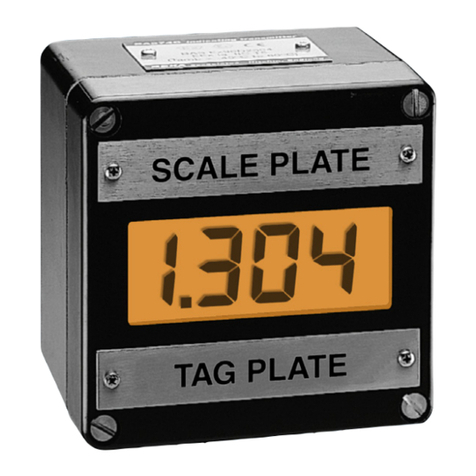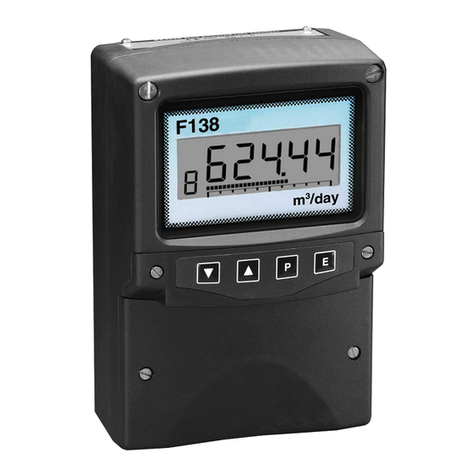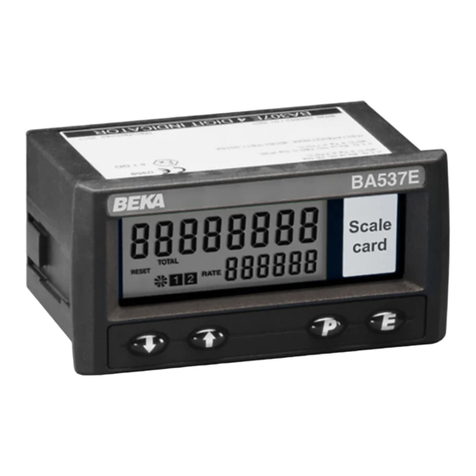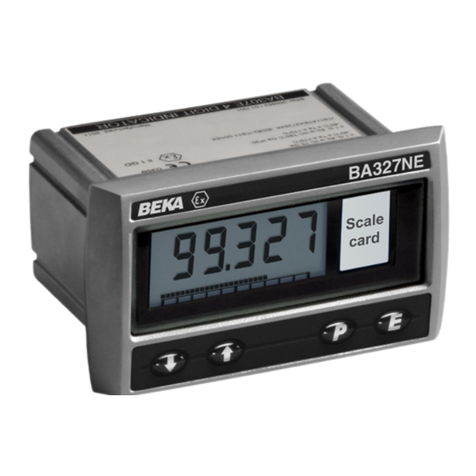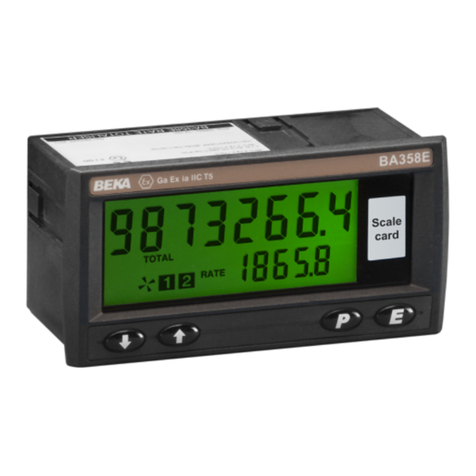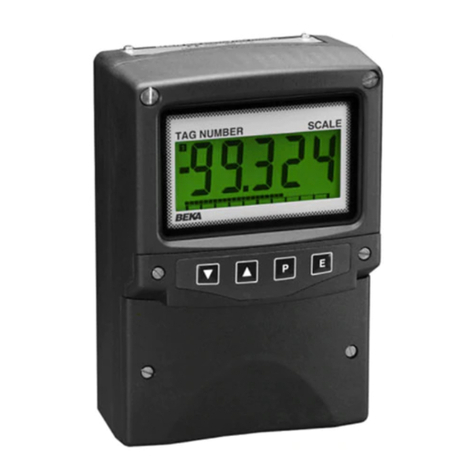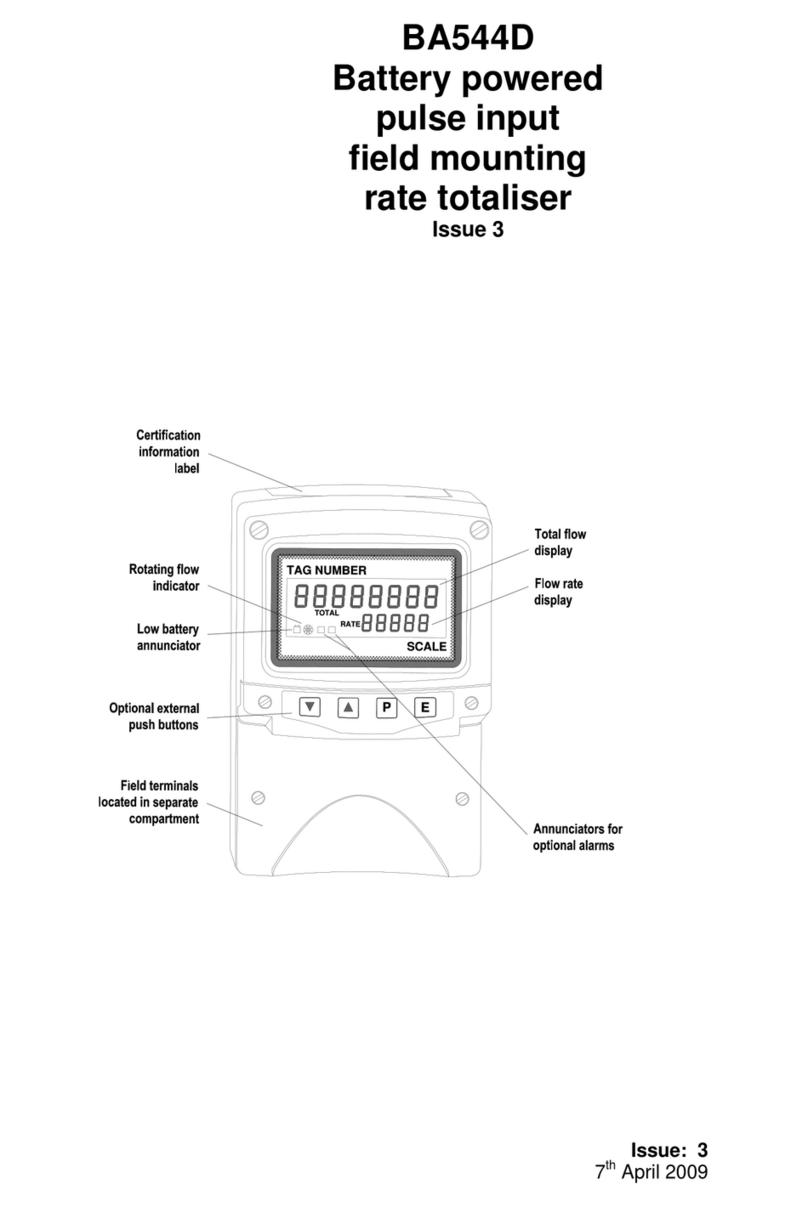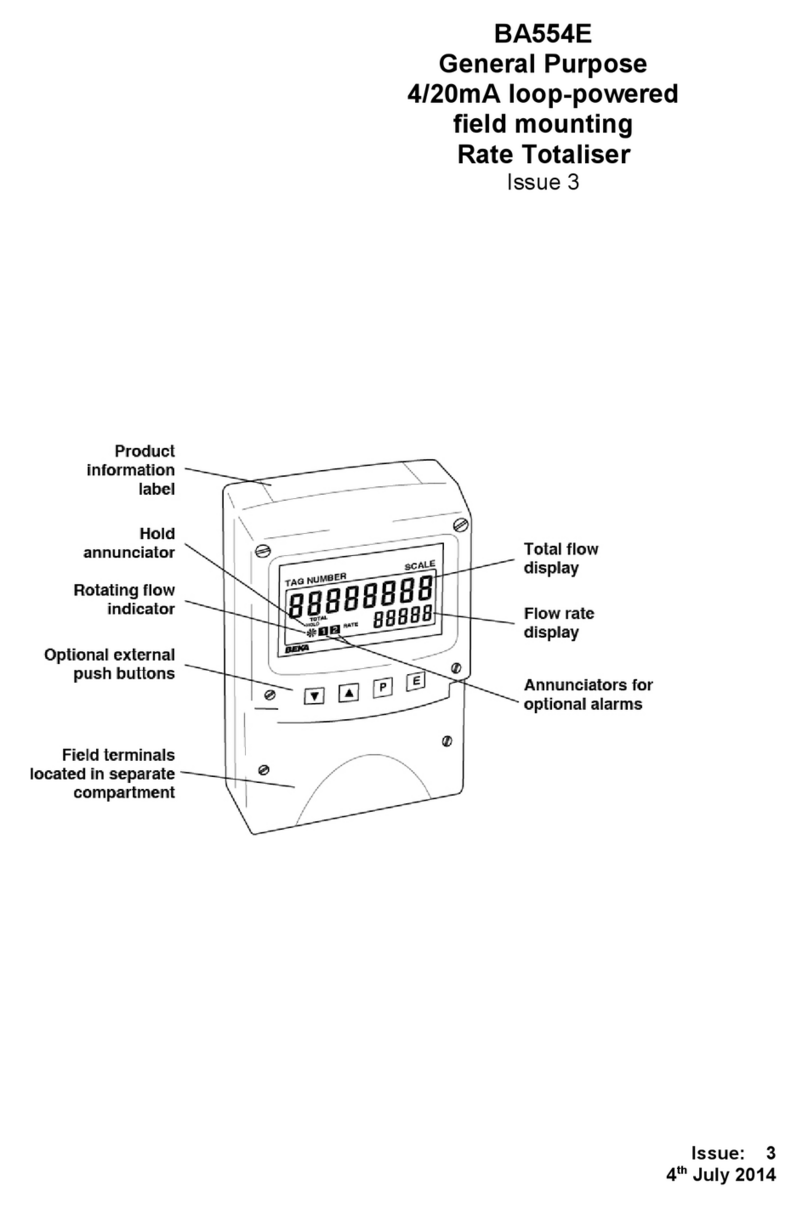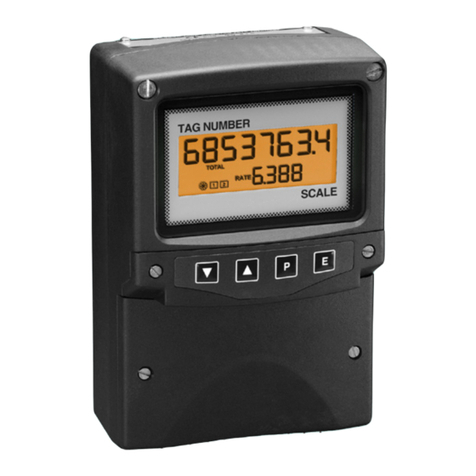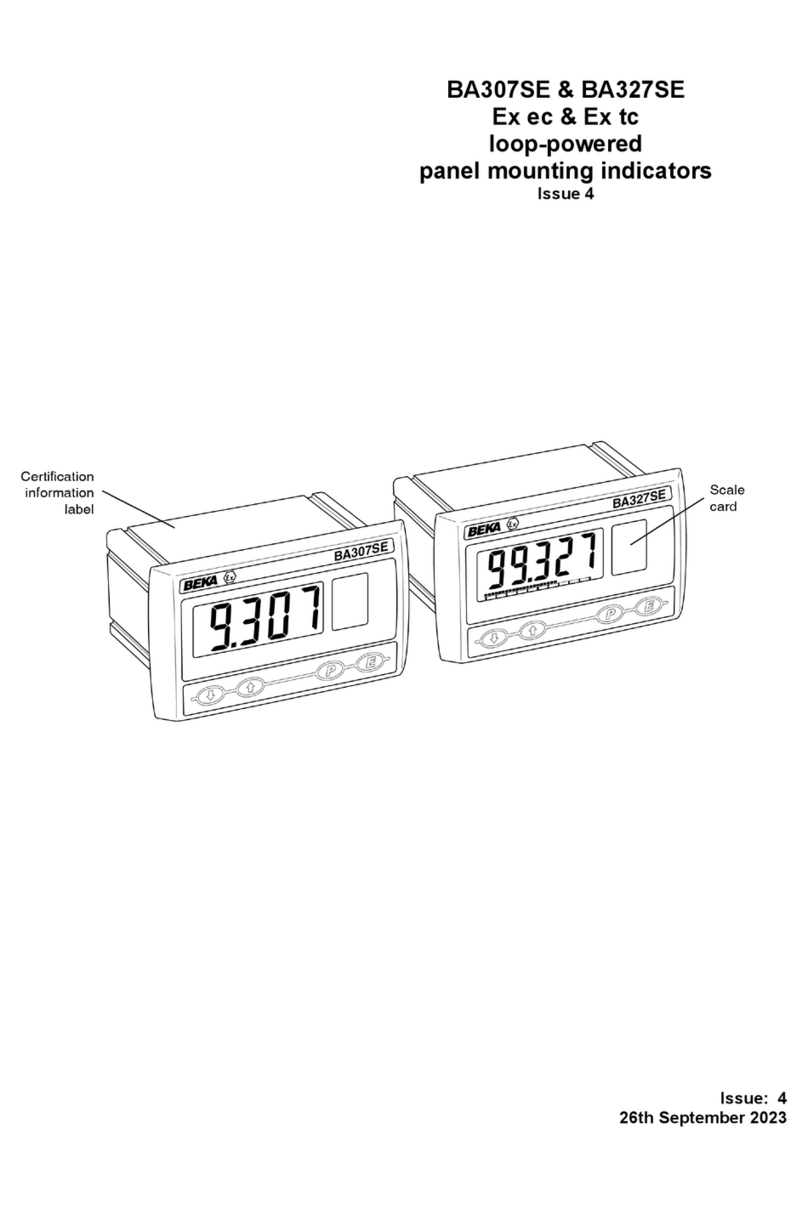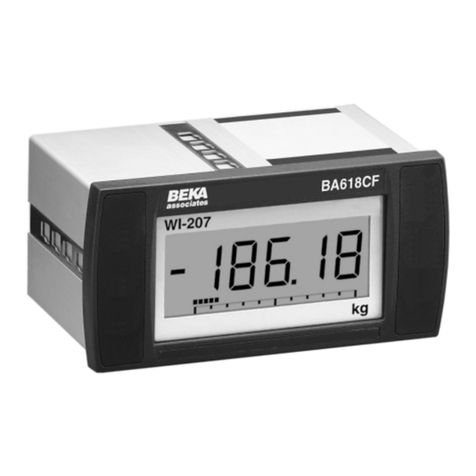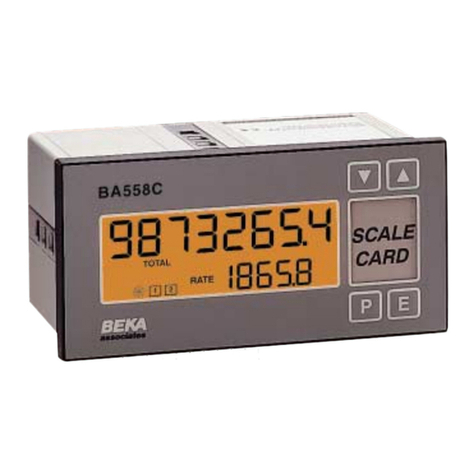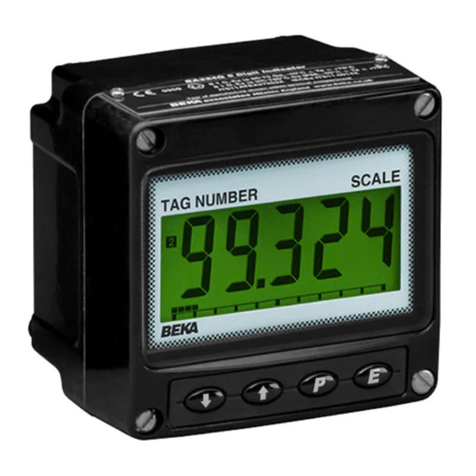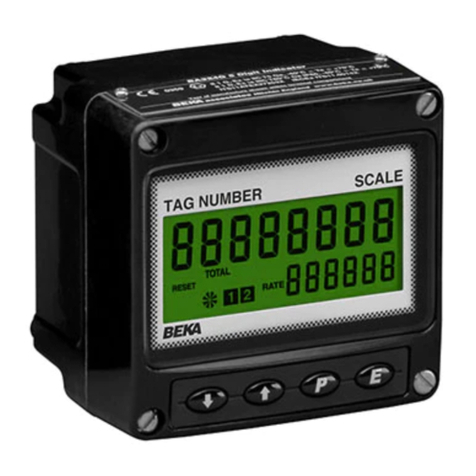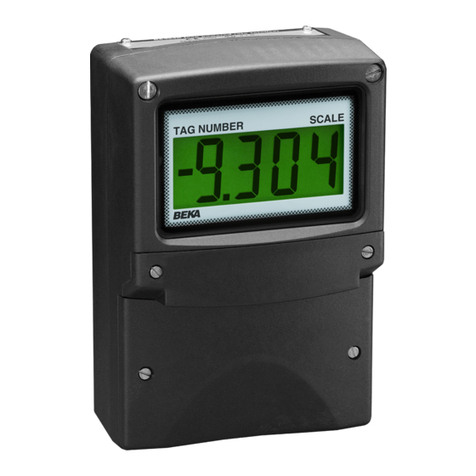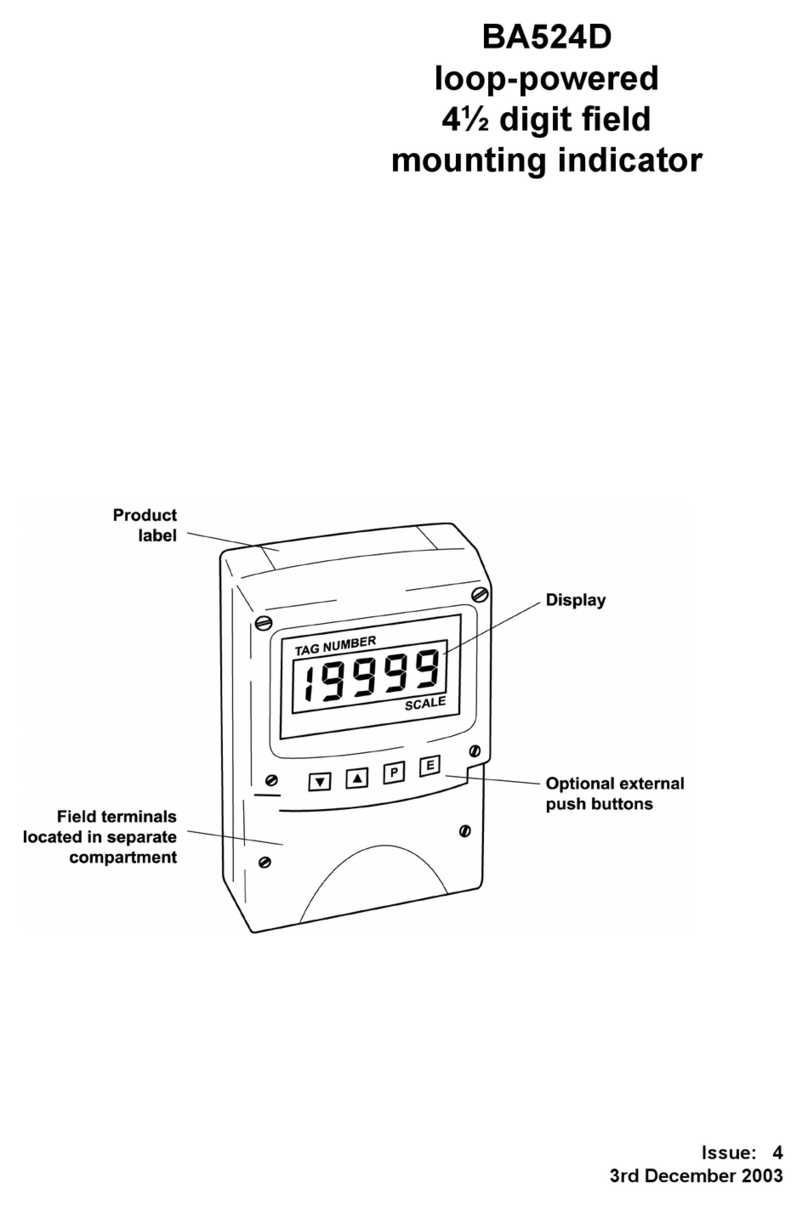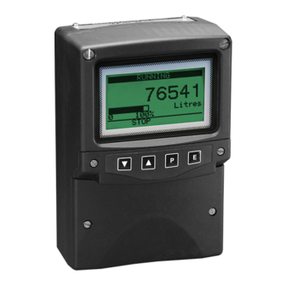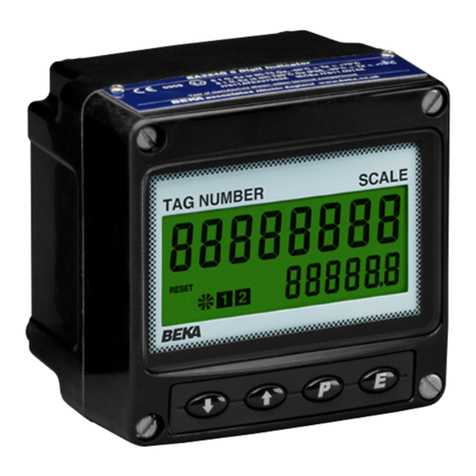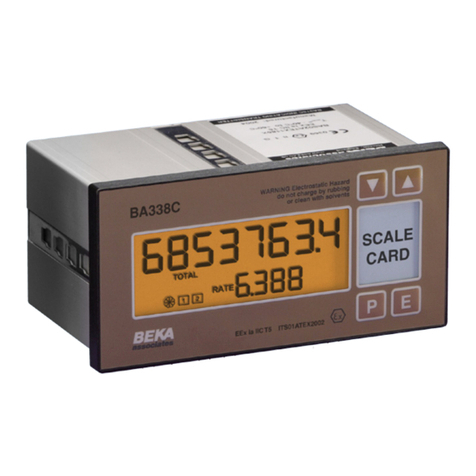
5
2. Apparatus in safe area must not be
supplied from nor contain under normal
conditions a source of potential with
respect to earth in excess of 250V rms or
250V dc.
3. Both M20 entries must be fitted with an Ex
e or Ex n certified cable gland or blanking
plug.
4. The 4/20mA loop must be able to tolerate
the additional 1.1V required to operate the
indicator.
CAUTION !
The enclosure cover should only be
removed when the measuring loop is not
energised, or when there is no risk of a
flammable atmosphere being present and
dust or water can not enter the
enclosure. Before replacing the
enclosure cover ensure that the sealing
gasket is undamaged and that it is free
from dirt and foreign bodies.
In practice it is only necessary to ensure that in
normal operation the maximum current flowing in
the 4/20mA loop is less than 40mA. Fig 2 shows
a temperature measuring loop in which the
maximum current in normal operation is defined by
the maximum output from the Type n transmitter.
The sum of the maximum voltage drops of all the
components in the loop must be less than the
minimum power supply voltage. Considering the
example shown in Fig 2.
Minimum operating voltage of 2-wire Tx 10.0
Maximum voltage drop caused by controller 5.0
Maximum voltage drop caused by BA304NC 1.1
Maximum voltage drop caused by cables 0.4
_____
16.5V
Therefore at 20mA the power supply in this
example must have an output greater than 16.5V
4.2 Remote indication
A BA304NC indicator may be driven from a
4/20mA safe area signal to provide a remote
indication within a Zone 2 hazardous area. Fig 3
shows a typical application in which the output
from a gas analyser drives a BA304NC. Again it is
necessary to ensure that the loop complies with
the three design requirements listed in section 4.1.
Fig 3 Remote indication
5. INSTALLATION
5.1 Location
The BA304NC indicator can be supplied in either a
glass reinforced polyester (GRP), or an epoxy
painted aluminium enclosure. Both provide IP66
protection and have a polycarbonate window and
stainless steel fittings. The GRP enclosure is
suitable for most industrial installations including
off-shore and waste water treatment applications.
For installations where solvents may be present,
the aluminium enclosure provides maximum
protection, but it is not recommended for offshore
applications.
Both enclosures are surface mounting, but may be
pipe or panel mounted using the accessory kits
described in section 8 of this manual.
To simplify installation, the enclosure can be
installed and the field wiring terminated prior to the
indicator assembly being fitted. The enclosure
contains diodes to maintain continuity of the
4/20mA loop when the indicator assembly is not
present. Terminals 2 and 4 are internally joined
and may be used for linking the return 4/20mA wire
- see Fig 2. Similarly, terminals 5 and 6 are
internally joined and may be used for linking the
cable screens. Terminal 7 is internally connected
to an insulated radio frequency screen in the GRP
enclosure, and to the case in the aluminium
enclosure .
